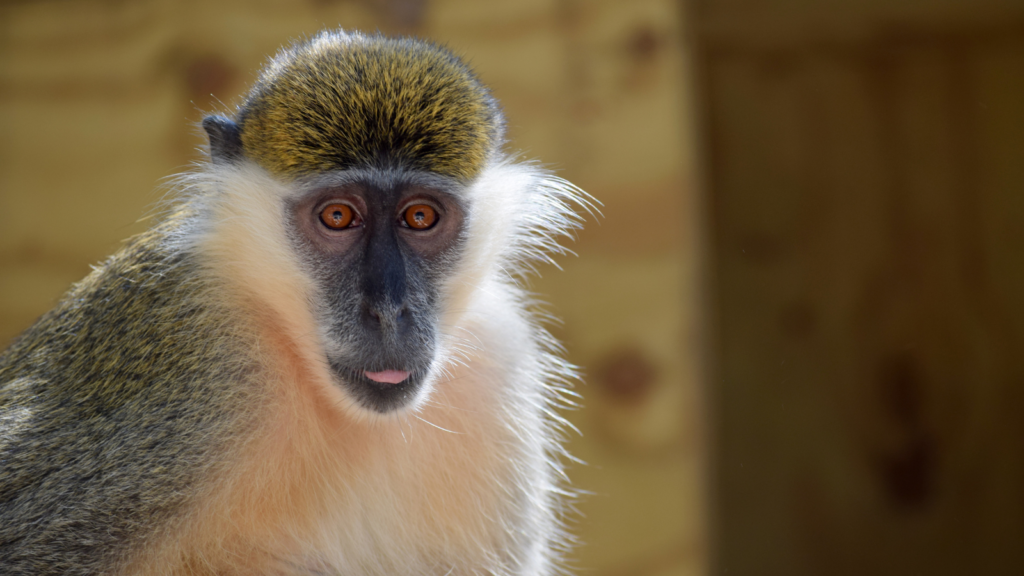About Monkeys
At Primarily Primates, monkeys are most numerous among our residents. While PPI cares for 37 apes that include 33 chimpanzees, and 42 prosimians such as lemurs, our sanctuary is home to 147 monkeys.
The biggest difference between great apes and monkeys is almost all monkeys have tails and apes do not. Apes are typically terrestrial, meaning they move about on the ground, versus monkeys, who are arboreal, which means they live in trees. While there are only a few species of apes, there are hundreds of species of monkeys.
Before arriving here, all 147 of our monkeys were exploited by the exotic pet trade, research and the entertainment industry.
Among our residents, are New World monkeys who hail from southern Mexico and Central and South America, as well as Old World Monkeys who come from Africa and Asia. The New World monkeys who call PPI home are our spider monkeys, capuchins, marmosets and cotton-top tamarins, which are our smallest primates at the sanctuary. In the wild these species live almost entirely in foliage and seldom leave the trees.

Capuchins
Capuchins are considered the most intelligent of New World Monkeys and as a result are often used in lab experiments. Most New World monkeys have a prehensile or partially prehensile tail, which means their tails are superb grasping devices capable of supporting their entire weight, freeing their hands for eating.
Capuchin monkeys are often seen in movies—Outbreak, Pirates of the Caribbean, Zookeeper, George of the Jungle, and The Hangover Part II, to name a few—sending the wrong message to the public that primates make good pets.
Most of the capuchins who live at Primarily Primates are ex-pets—primates who were bred in captivity and became part of the vast, problematic pet trade before they were surrendered. The stories of the ex-pet capuchins (and other ex-pet primates) are all strikingly similar: Once capuchins hit puberty, they can becomes aggressive, territorial and impossible to deal with. That’s usually when the phone rings at Primarily Primates.
Old World Monkeys
Our Old World monkey residents include mangabeys, baboons, colobus monkeys, patas monkeys, langurs and macaques. Their tails are never prehensile.
Interestingly, not all sanctuaries will work with macaques because feeding them can be quite complicated. Macaques have a dominant member who must eat first, no matter what. There is a “deputy” (second in command) who ranks just below and helps monitor what others in the group are doing, such as when they eat and how they interact with others. If a member of the group eats out of turn, he or she will likely be severely punished by ranking members of the group.
Additionally, like all primates, they are very smart, and require lots of mental stimulation to remain happy and well-adjusted. Primarily Primates puts a lot of effort into mental stimulation for all our monkeys, great apes and prosimians through auditory, taste, touch and visual enrichment. Sensory enrichments activities include burning patchouli, coconut and cinnamon incense, and aromatic plant materials infused with essential oils.
Care staff members also use music as enrichment. And daily food enrichment treats using a variety of ingredients also provides enjoyment. A varying diet helps prevent boredom, particularly if the animals are actively engaged in efforts to obtain the offerings.

